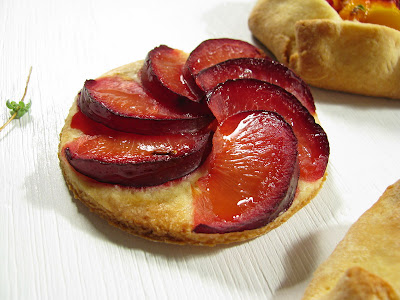For the September's Fresh from the Oven Challenge we had to make polenta bread. The hostess - Becky from Fraxknits chose a recipe by Christine Ingram and Jennie Shapter. The recipe included some pine nuts but we were out of stock, so replaced them with pumpkin seeds. And as we were in the middle of drying Capia peppers, we added two tablespoons of chopped dry peppers. So the bread turned in really vivid colours – yellow from the polenta, green from the pumpkin seeds and red from the peppers.
Polenta bread is a bread I associate with my childhood. I and Ivan grew up in Silistra – a beautiful small town in north-east Bulgaria that lies on the southern bank of the lower Danube at the border with Romania. In the past Silistra had been occupied by the romanians and there was a great intercultural interaction there. Ivan's grandmother, for example, had attended only romanian school and later when the occupation was over she had to learn to write in bulgarian, but she still uses a lot of romanian words.
Such an interaction could be found in the cuisine too. When I was a child my grandmother used to make malai (the romanian equivalent of polenta bread) and mamaliga (cooked polenta). In the other parts of Bulgaria polenta is called kachamak. Quite a mess.
Thinking now, polenta bread is not so common anymore. Mum still makes it sometimes but there aren't many other people taking up with this, which is a pity.
Polenta Bread Recipe:
Adapted from “Bread” by Christine Ingram and Jennie Shapter
Makes 1 loaf
- 50gr polenta;
- 300ml lukewarm water (divided 250 + 50 ml);
- 15gr fresh yeast (or 5gr active dry yeast);
- 1/2 tsp clear honey;
- 225gr white bread flour (divided 115 + 110gr) – we had to add 50 more grams of flour;
- 25gr butter;
- 3 Tbsp pine nuts (we used chopped pumpkin seeds);
- 1 and 1/2 tsp salt;
- 2 Tbsp chopped dry red Capia pepper(but fresh one would work too).
- 1 egg yolk;
- 1 Tbsp water;
- pine nuts for sprinkling (pumpkin seeds again, this time whole ones).
In a small bowl, mix the yeast with the remaining water and honey until creamy/frothy (depending on the yeast being fresh/dry). Sift 115g of the flour into a larger bowl. Gradually beat in the yeast mixture, then gradually stir in the polenta mixture to combine. Turn out on to a lightly floured surface and knead for 5 minutes until smooth and elastic. (We skipped this kneading as the dough was too wet, but it was ok)
Cover the bowl and leave the dough to rise in a warm place for 2 hours or until it has doubled in bulk.
Melt the butter in a small pan add the pine nuts (pumpkin seeds in our case) and cook over a medium heat. Set aside to cool.
Add the pine nuts cooked in butter (and the butter), the chopped dry peppers and the remaining flour and salt to the polenta dough and mix to a soft dough Turn out on to a lightly floured surface and knead for 5 minutes until smooth and elastic. (Here we had to add 50 more grams of flour to form a dough suitable for kneading.)
Place the dough in the bowl again, cover with the lid and leave to rise in a warm place for about 1 hour or until doubled in bulk.
Knock back (punch down) and turn the dough out on to a lightly floured surface. Cut the dough into two equal pieces and roll each piece into a fat sausage about 38 cm/15 inches long. Plait (braid) together the two pieces and place on a lightly greased baking sheet. Cover and leave in a warm place for 45 minutes. Pre-heat the oven to 200º C.
Mix the egg yolk and water and brush over the loaf. Sprinkle with the pumpkin seeds and bake for 30 minutes or until golden and sounding hollow when tapped on the base. Cool on a wire rack.




































